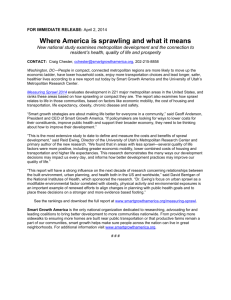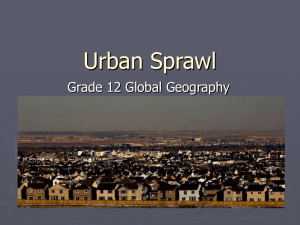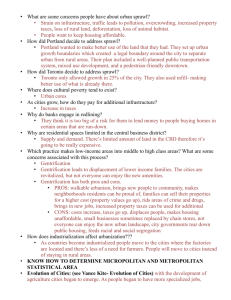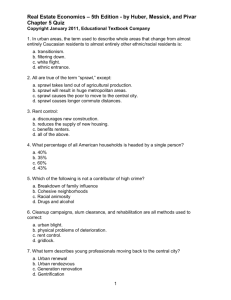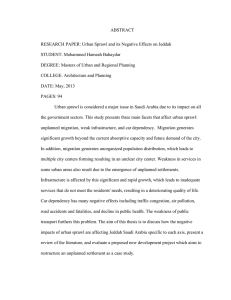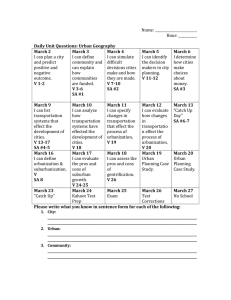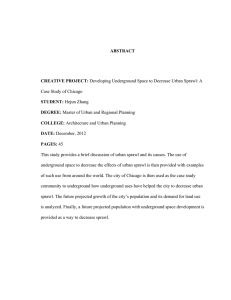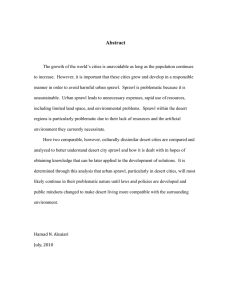Russ Lopez, MCRP, DSc Department of Environmental Health
advertisement
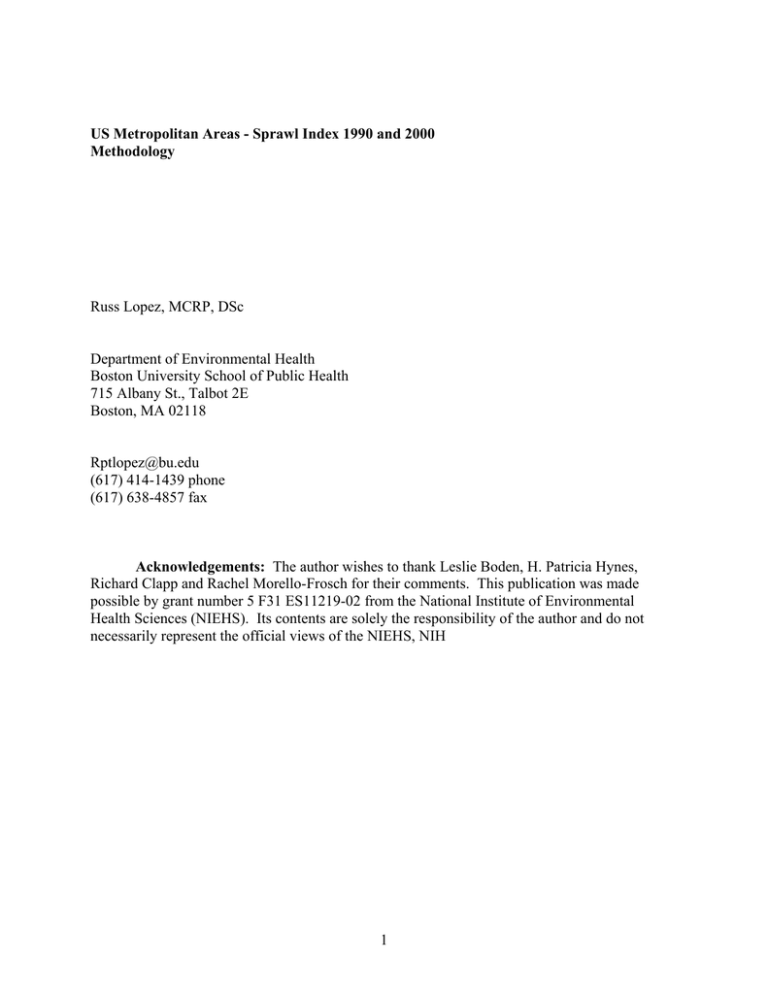
US Metropolitan Areas - Sprawl Index 1990 and 2000 Methodology Russ Lopez, MCRP, DSc Department of Environmental Health Boston University School of Public Health 715 Albany St., Talbot 2E Boston, MA 02118 Rptlopez@bu.edu (617) 414-1439 phone (617) 638-4857 fax Acknowledgements: The author wishes to thank Leslie Boden, H. Patricia Hynes, Richard Clapp and Rachel Morello-Frosch for their comments. This publication was made possible by grant number 5 F31 ES11219-02 from the National Institute of Environmental Health Sciences (NIEHS). Its contents are solely the responsibility of the author and do not necessarily represent the official views of the NIEHS, NIH 1 This Sprawl Index uses Census data to construct a measure of residential sprawl for metropolitan areas. It is based on the density and concentration dimensions of sprawl and is easily calculated. Data are from the 1990 and 2000 US Census, downloaded from the Census Internet Site). In addition to population counts for each census tract in the country, the files contain data on which, metropolitan area, if any, the tract is in. The files also contains an estimate of the land area in each tract derived by drawing a polygon that approximates the size and shape of the land area of the tract and measuring the area of this polygon. While this is not an exact measure of land area, it is a close approximation. Population density in each census tract was computed by dividing its population by its land area. For each metropolitan area, tracts were sorted into high-density tracts (greater than 3500 persons per square mile), low-density tracts (between 3500 and 200 persons per square mile), and rural tracts which are excluded from this analysis (fewer than 200 persons per square mile). A Sprawl Index (SI) score was computed for each of 330 out of 331 metropolitan areas. The Sprawl Index is defined as: SIi = (((S%i - D%i)/100) + 1)) x 50 Where, SIi = Sprawl Index for Metropolitan Area i D%i = S%i = percentage of the total population in high density census tracts i percentage of total population in low density census tracts i It is then transformed by constants to produce a final score on a 0 to 100 scale. The choice of cutoffs between high-density, low-density and rural are not arbitrary. Since metropolitan areas are defined by the Census based on political boundaries, most metropolitan areas contain some fraction of rural population and land that should not be included in a sprawl analysis. Two hundred persons per square mile roughly corresponds to one residential unit per four acres – about the lowest residential density of many new suburban housing developments (keeping in mind that no place uses 100% of its land for residential purposes – land includes roads, schools, places of employment, etc.).1 This threshold density has been used by others. The 3500 persons per square mile cut off is also subject to debate. Three thousand five hundred roughly corresponds to about 5 residential units per acre of residential land and it is close to an estimate of density that is commonly held as needed to support mass transit, a potential component of urbanism and at the high end of the range that promotes pedestrian activity. Walking begins to increase at densities between 1000 and 3999 persons per square mile while per capita vehicle miles traveled begins to drop at densities greater than 3000 persons per square mile. While the actual cutoff point could be debated, this measure is a good starting point for analyzing sprawl. The potential range of values for this Sprawl Index is 0 to 100. At 100, the metropolitan area population lives entirely in low-density census tracts indicative of the highest level of 2 sprawl. At 0, the metropolitan area population lives entirely in high-density census tracts signifying the least amount of sprawl. At 50, these populations live equally in the two situations in a given metropolitan area. 1 Some recent rural housing- and recreation-oriented developments involve subdivisions at the scale of one unit per five acres or even larger lots. While these rural developments are problematic because of their impact on the rural environment, loss of agriculture and fragmentation of habitats, and while they may be potentially related to urban sprawl, these types of development are beyond the focus of this analysis. They merit a separate analysis of what we would call rural sprawl, that is, the subdivision of rural land. There are implications for rural character, rural ecology and rural environment that may differ from the effects of urban sprawl. 3

